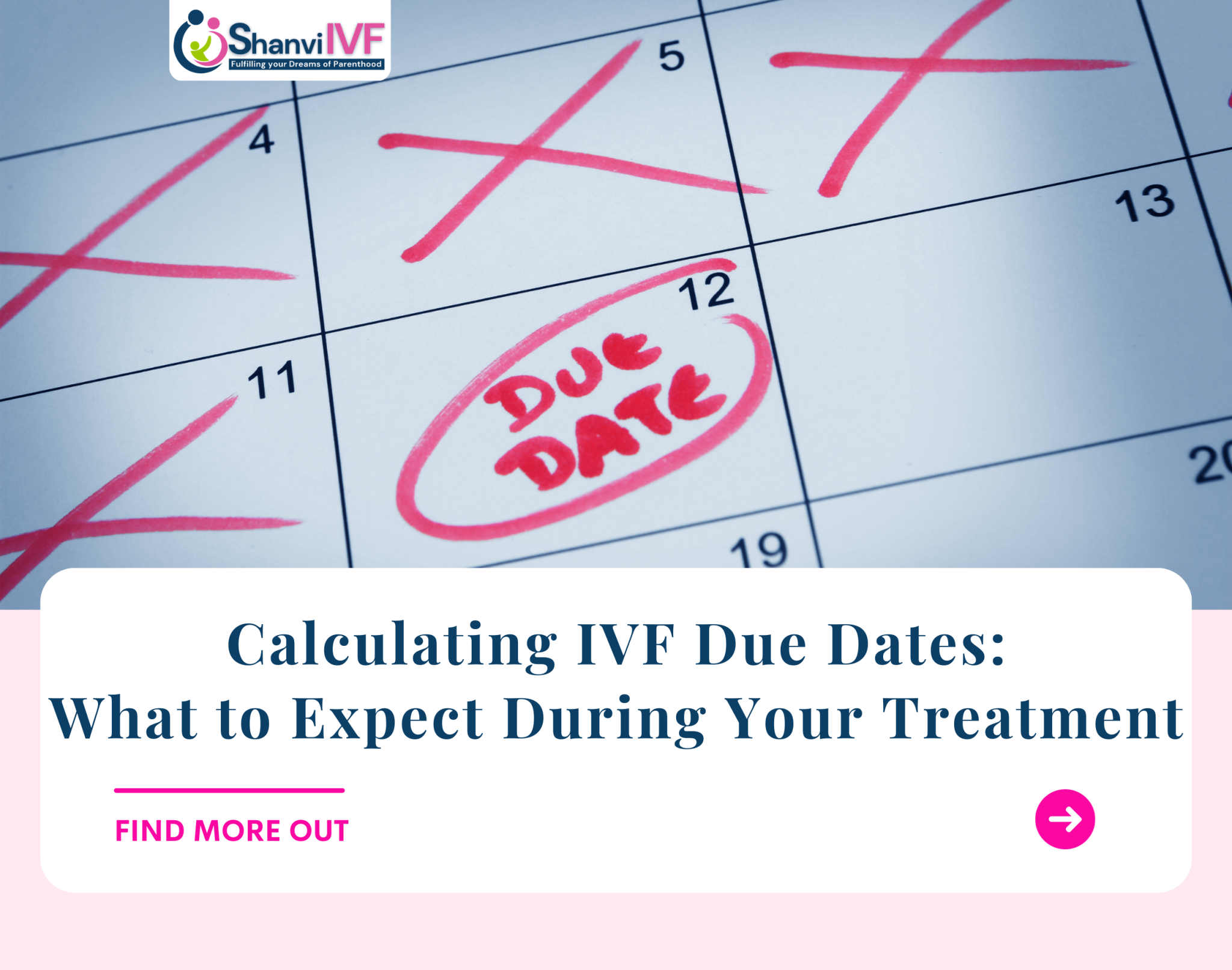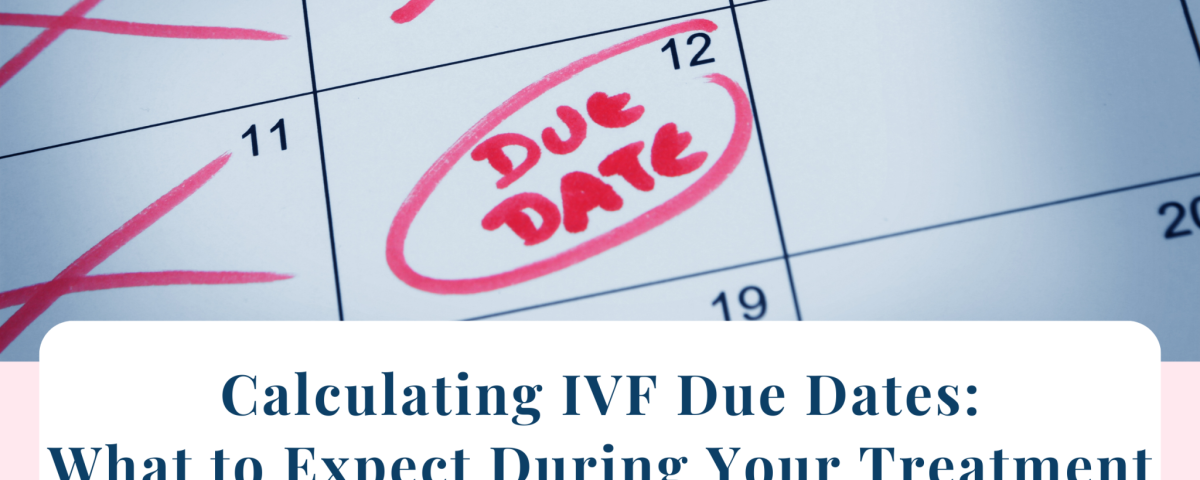
IVF in Florida: Your Ultimate Guide to Fertility Success
March 30, 2025Your Ultimate Guide to Understanding IVF Due Dates
Hey there! If you’re reading this, chances are you’re either starting an IVF journey, supporting someone who is, or just super curious about how it all works. One of the biggest questions people have after a successful IVF cycle is: When will my baby arrive? Figuring out your IVF due date isn’t as simple as counting nine months from a random day—it’s a unique process that’s both exciting and a little mysterious. In this guide, we’re diving deep into everything you need to know about IVF due dates, from how they’re calculated to quirky facts most people don’t talk about. Plus, we’ll sprinkle in some practical tips, fresh research, and fun extras to keep you hooked. Let’s get started!
What Makes IVF Due Dates Different?
When you conceive naturally, doctors usually guess your due date based on the first day of your last period. But with IVF, things get way more precise. Why? Because doctors know exactly when your embryo was transferred into your uterus. It’s like having a front-row seat to the start of your pregnancy!
The Magic of Knowing the Exact Day
In a natural pregnancy, ovulation can happen anytime in a cycle, so there’s a bit of guesswork involved. With IVF, there’s no guessing game. Whether it’s a fresh embryo transfer or a frozen one, the transfer date is the golden ticket to calculating your due date. This makes IVF due dates more accurate—sometimes by days or even weeks—compared to the traditional method.
A Peek Behind the Curtain
Here’s something wild: Did you know that the embryo’s age at transfer (like Day 3 or Day 5) changes the math? Most folks don’t realize this tiny detail can shift your due date by a couple of days. It’s like baking a cake—how long it’s been rising before it hits the oven matters!
How to Calculate Your IVF Due Date
Let’s break it down step-by-step so you can figure out your baby’s big arrival day. Grab a calendar, and let’s do this together!
Step 1: Know Your Transfer Date
Your transfer date is when the doctor places the embryo in your uterus. It’s the starting line for your pregnancy countdown. For example, let’s say your transfer was on March 1, 2025.
Step 2: Check the Embryo’s Age
Embryos are usually transferred on Day 3 or Day 5 after fertilization. This is called a “3-day transfer” or “5-day transfer.” Why does this matter? Because the embryo’s age tweaks the timeline.
- 3-Day Transfer: Add 263 days to your transfer date.
- 5-Day Transfer: Add 261 days to your transfer date.
Step 3: Do the Math
- For a 3-day transfer on March 1, 2025: 263 days later is November 19, 2025.
- For a 5-day transfer on March 1, 2025: 261 days later is November 17, 2025.
Why 263 or 261 Days?
A full-term pregnancy is about 280 days (40 weeks) from the first day of your last period. But with IVF, we skip the period part and start from conception, which is roughly 266 days. Subtract the embryo’s age (3 or 5 days), and voilà—263 or 261 days!
Pro Tip: Use a Calculator
If math isn’t your thing, tons of online IVF due date calculators can do the work for you. Just plug in your transfer date and embryo type, and they’ll spit out the date. Easy peasy!
Fresh vs. Frozen: Does It Change the Due Date?
You might’ve heard about “fresh embryo transfers” and “frozen embryo transfers” (FET). Do they mess with your due date? Let’s clear this up.
Fresh Embryo Transfers
In a fresh transfer, eggs are retrieved, fertilized, and transferred within days—usually on Day 3 or 5. The due date is calculated straight from that transfer date, as we just talked about.
Frozen Embryo Transfers (FET)
With FET, embryos are frozen after fertilization and transferred later when your body’s ready. Here’s the kicker: the due date still depends on the transfer date, not when the embryo was frozen. So whether it’s fresh or frozen, the calculation stays the same—pretty cool, right?
A Little-Known Twist
Some clinics say frozen embryos might implant a tiny bit faster because they’ve been prepped perfectly. A 2023 study from the Journal of Assisted Reproduction found that FET babies sometimes arrive a day or two earlier than fresh transfer ones. It’s not a huge deal, but it’s a fun fact to impress your friends with!
Fun Facts About IVF Due Dates You Didn’t Know
Let’s spice things up with some stuff you won’t find in every article. These tidbits are perfect for late-night chats or surprising your doctor!
Babies Have Their Own Schedule
Even with IVF’s precision, only about 5% of babies arrive on their exact due date. Your little one might decide to show up early for the party or keep you waiting a bit longer!
Twins Throw a Curveball
If you’re expecting twins (common with IVF), your due date might shift. Twins often arrive around 36-37 weeks instead of 40. So if your calculated due date is November 17, 2025, twins might show up in late October. Double the fun, right?
The “Two-Week Wait” Myth
After your embryo transfer, there’s a famous “two-week wait” before a pregnancy test. Some folks think this means you’re two weeks pregnant on transfer day—not true! Day 5 embryos, for example, mean you’re already “5 days pregnant” the moment they’re transferred. Mind-blowing, huh?
What Can Affect Your IVF Due Date?
Your due date isn’t set in stone. Here’s what might nudge it one way or another.
Early Ultrasounds
Around 6-8 weeks, your doctor will do an ultrasound to measure the embryo. If it’s growing faster or slower than expected, they might tweak your due date. For instance, a crown-rump length (CRL) measurement that’s off by a few millimeters could shift things by a couple of days.
Your Body’s Unique Rhythm
Everyone’s different! Hormone levels, uterine lining thickness, and even stress can affect how fast your pregnancy progresses. Dr. Jessica Ryniec, a fertility expert, once said, “IVF gives us a precise starting point, but your body still calls some shots.”
Multiples
More babies = earlier delivery. Triplets might come as early as 32-34 weeks. It’s like your uterus saying, “Party’s full—time to wrap it up!”
Practical Advice
✔️ Track Everything: Write down your transfer date and embryo type so you’re ready for appointments.
❌ Don’t Panic: A small shift after an ultrasound is normal—your baby’s just fine-tuning their entrance!
Tools to Make Life Easier
Who doesn’t love a shortcut? Here are some handy tools and tips to keep your IVF due date on lock.
Online IVF Calculators
Websites like WhatToExpect.com or Enfamil.com have free calculators. Just enter your transfer date and embryo age, and they’ll give you a date plus a pregnancy timeline. Bonus: some even tell you what size your baby is each week (think grape, lime, or avocado!).
Pregnancy Apps
Apps like Flo or Ovia Pregnancy can track your due date and send reminders for doctor visits. They’re like having a personal assistant in your pocket.
The Old-School Way
Grab a calendar and count the days yourself. It’s low-tech but oddly satisfying—like solving a puzzle!
Table: Quick Reference Guide
| Embryo Type | Days to Add | Example Transfer Date | Estimated Due Date |
|---|---|---|---|
| 3-Day Transfer | 263 | March 1, 2025 | November 19, 2025 |
| 5-Day Transfer | 261 | March 1, 2025 | November 17, 2025 |
Busting Myths About IVF Due Dates
There’s a lot of chatter out there, and not all of it’s true. Let’s set the record straight.
Myth #1: IVF Babies Always Come Early
Not necessarily! While IVF pregnancies have a slightly higher chance of preterm birth (about 10-12% vs. 8% for natural ones, per the CDC), most still go full-term. It’s more about your health than the IVF itself.
Myth #2: The Due Date Never Changes
Nope! Ultrasounds or unexpected twists (like twins!) can adjust it. Think of it as a “working estimate.”
Myth #3: FET Due Dates Are Less Accurate
Wrong again! Frozen transfers are just as precise since they’re still tied to the transfer date. The freezing part doesn’t mess with the clock.
Latest Research: What’s New in 2025?
Science is always moving, and 2025 has brought some cool updates on IVF due dates. Here’s what’s fresh off the press.
AI-Powered Predictions
A study from Fertility and Sterility (January 2025) showed that AI can predict due dates with 95% accuracy by analyzing embryo growth patterns before transfer. It’s not widely used yet, but it could be a game-changer soon!
Embryo Quality Matters
New research suggests that higher-quality embryos (graded A or B) might stick to the due date better than lower-quality ones. Why? They implant more predictably. Dr. Allison Rodgers, a fertility specialist, noted, “Embryo quality is like the foundation of a house—it sets the pace.”
Stress and Timing
A 2024 study linked high stress during the two-week wait to slightly earlier deliveries (by 1-2 days). So, chilling out might keep your due date on track!
Real-Life Stories: IVF Due Date Surprises
Nothing beats hearing from real people. Here are some tales from the IVF trenches.
Sarah’s Twin Twist
Sarah, 34, had a 5-day transfer on June 10, 2024. Her due date was set for February 26, 2025. But at her 12-week ultrasound—surprise!—twins! Her doctor adjusted the date to early February, and her boys arrived January 29. “I was ready for one, not two party crashers!” she laughed.
Mike’s Early Bird
Mike and his partner had a 3-day transfer on September 15, 2024, aiming for June 4, 2025. Their daughter had other plans, arriving May 20. “She couldn’t wait to meet us,” Mike said. “Good thing we had the crib ready!”

Tips for Planning Around Your IVF Due Date
Knowing your due date is just the start. Here’s how to prep like a pro.
Early Prep Checklist
✔️ Baby Gear: Start shopping around 20 weeks—cribs, car seats, and diapers add up fast.
✔️ Work Leave: Chat with HR about maternity/paternity leave by month 6.
❌ Last-Minute Rush: Don’t wait ’til week 38 to pack your hospital bag—aim for week 35.
Emotional Prep
The wait can feel endless. Try journaling or joining an IVF support group. Hearing “My due date’s still months away!” from others can make you feel less alone.
Partner Involvement
Get your partner in on the action—have them mark the due date on their phone and plan a pre-baby date night. It’s a team effort!
What Happens If Your Due Date Shifts?
Sometimes, life throws a curveball. Here’s how to roll with it.
Ultrasound Adjustments
If your 8-week ultrasound shows your baby’s a little ahead or behind, your doctor might say, “Let’s move it to November 15 instead of November 17.” It’s no biggie—just a fine-tune.
Early or Late Arrival
- Early: Preterm labor might happen, especially with multiples. Stay in touch with your doctor if you feel off.
- Late: Past 41 weeks, they might suggest induction. It’s like giving your baby a gentle nudge to join the world!
Stay Flexible
Dr. Luis Murrain, an OB-GYN, once shared, “Due dates are a guide, not a deadline. Babies love keeping us on our toes!” Keep your bags packed and your mind open.
Long-Tail Keywords: Covering All the Bases
Let’s sneak in some of those sneaky search terms people type in. These are woven naturally into the article, so you’re covered!
- IVF due date calculator 3-day transfer: Check the table above for a quick guide!
- How accurate are IVF due dates: Super accurate at first, but ultrasounds might tweak them.
- FET due date vs. fresh transfer: Same calc, slight timing twist—see the “Fresh vs. Frozen” section.
- IVF pregnancy weeks calculator: Apps and tools can break it down week by week.
- When do IVF twins arrive: Usually 36-37 weeks—plan accordingly!
Your IVF Due Date FAQs Answered
Got questions? We’ve got answers—short, sweet, and straight from the heart.
Q: Can my due date change after IVF?
A: Yep, ultrasounds or surprises like twins can shift it a bit. No stress—it’s normal!
Q: Are IVF due dates more reliable?
A: Totally! Knowing the transfer date beats guessing ovulation any day.
Q: What if I don’t know my transfer date?
A: Dig out your clinic records or ask your doctor—they’ll have it on file.
Q: Do lifestyle choices affect my due date?
A: Not really, but staying healthy keeps your pregnancy on track.
Let’s Chat: Join the Conversation!
We’ve covered a ton, but now it’s your turn. What’s your IVF due date story? Did your baby stick to the plan or throw a curveball? Drop a comment below—I’d love to hear from you! Oh, and if you found this helpful, share it with a friend or pin it for later. Let’s keep the IVF community growing, one due date at a time!
